Overview
Thanks to Digital Cameras, quick-and-easy pictures have become readily accessible to any amateur photographer. But if you’re making your first foray into DigiCam territory, here’s what need to know.
What is a digital camera?
A digital camera is a portable device used to capture still images, video and sound. Designed as a modern-day successor to ageing 35mm film cameras, a digital camera – or digicam as it’s sometimes known – can store large amounts of data on built-in memory and, if equipped with a screen, display content immediately after capture.
Today, digital cameras can be found everywhere. With modern-day technology allowing for smaller components, high-quality cameras can be found in pocket-size devices such as mobile phones.
Smaller doesn’t equate to better, though. For those demanding high-quality images, devices such as digital single-lens reflex camera (DSLRs) cater to the high-end digital camera market.
As a beginner’s guide to digital cameras, we’ll be focussing on entry-level compact digital cameras, so let’s get started on demystifying some of the common jargon.
The compact digital camera
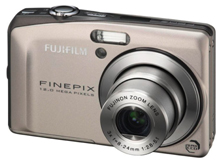
As you may have guessed, a compact digital camera serves the purpose of capturing digital-quality images or videos in a form factor that’s lightweight, small and ideal for portability.
Due to their size, compact digital cameras tend not to cater for high-end use and rarely provide optional extras such as the addition of a more-powerful flash or an alternative lens.
The pocket-size solution is an all-in-one option that aims to be easy-to-use right out of the box. But what about all the differentiating factors? Let’s take a look at the six basics; image resolution, lens, display, storage, battery life and connectivity.
Is it all about the megapixels?
Since the arrival of digital cameras in the early 1990’s, megapixels have been the buzz word most commonly used to entice customers.
The term, meaning one million pixels, is used to detail the maximum capture resolution available to a camera, and is generally restricted by a camera’s built-in sensor.
A sensor’s size, coupled with factors such as lens quality, will ultimately determine the maximum still-image resolution of a camera. As an example, a camera able to produce images at a resolution of 2,560 x 1,920 will be rated as 5 megapixel (4,915,200 total pixels).
However, although a higher megapixel count will indicate a greater resolution, it isn’t always indicative of greater quality. The majority of today’s compact digital cameras offer high resolutions in excess of 5 megapixels, and with the sheer number of pixels well catered for, a more compelling feature could be the lens.
Which is the lens for me?
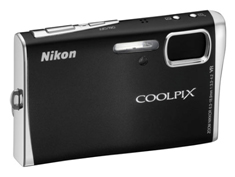
In a compact digital camera, the choice of lens tends to be threefold; standard, digital zoom and optical zoom.
A standard lens is the most basic and sits flush in the body of a camera – as shown in the Nikon Coolpix to the right. Although perfectly adequate for everyday point-and-shoot photography and ideal for portability, a standard lens will provide basic-or-no zoom capability.
Digital zoom, a feature now present on nearly all digital cameras, allows for zoom functionality but not in the traditional sense. Instead of using optics to zoom, digital zoom enlarges a portion of an image and crops all sides to maintain aspect ratio. Unfortunately, by effectively blowing-up an image electronically, it often results in reduced image quality.
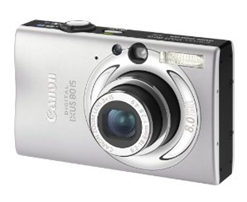
Optical zoom, the preferred method of zoom for better-quality results, makes use of a lens that protrudes from the body of a camera.
By changing the distance between lenses, an optical zoom can alter the focal length and increase magnification at the expense of field of view.
The result is zoomed images of far-greater quality than that available from a digital zoom. If you plan on making use of zoom functionality, then, an optical zoom lens should be high on the priority list.
What happened to my viewfinder?
Strangely enough, due to the small size of a compact digital camera, they often don’t feature a viewfinder at all. Instead, they’ll most likely be equipped with an LCD screen that provides a live image of what will be captured, along with other data and information.
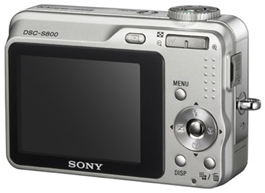
The screen, usually between 2-3” in size, is generally found on the rear of a compact digital camera and serves the primary purpose of framing a photo – what you see on screen is essentially what appears in the captured image.
In addition to acting as a live on-screen viewfinder, the LCD display can be can be used to view existing images/video and access menu options. In recent years, a variety of manufacturers have also begun to encorporate touchscreen displays – allowing for easy access to commonly used features.
A high-resolution screen can be essential to seeing what it is you’re about to capture in greater detail, and a larger screen size can can make it easier to view.
Where will all my images go?
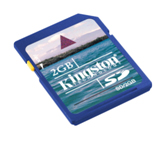
As there’s no longer a requirement for 35mm film, just where are all the images stored? The answer is digital memory cards.
You’ve no doubt seen them before and these tiny units – available in various form factors and sizes – electronically store digital images that can then be easily transferred to a PC. Unlike 35mm film, content on a memory card can be erased to free up storage room for repeated use.
But how much storage do you need? Well, it depends entirely on usage. The higher the resolution of your images, the higher the amount of memory occupied. Fortunately, memory cards are easily changed to allow for expansion to greater capacities.
Be wary, however, that there are a multitude of memory card solutions – and not all are compatible with every camera. Choices include CompactFlash, SD, Memory Stick and more, so be sure to check for compatability with your camera before making a memory card purchase.
Battery life
Digital cameras – even those of the compact variety – tend to have high power requirements and will therefore drain battery life fairly quickly. Battery power on such devices tends to be be provided by a choice of three battery types – standard, NiMH (Nickel metal hydride batteries) or lithium ion.
Standard batteries – that’s the everyday AA or AAA-type batteries – are for single use only and can therefore prove to be an expensive prospect in the long run.
NiMH batteries are a step up and provide recharge functionality. However, they don’t provide as much power as the third-and-preferred option; lithium ion.
Lithium ion batteries, now used in a large number of digital cameras, provide greater amounts of power allowing for longer use between charges.
Connectivity
Last but not least, there’s a small matter of connectivity. With the ability to storage images with ease, you’ll then want to connect a camera to a computer or peripheral that allows for the images to be viewed, transferred or printed.
The vast majority of digital cameras are equipped with a USB port and an appropriate set of leads that allow the device to be connected to a personal computer.
Should your computer feature a memory card reader, it may also be possible to remove a camera’s memory card and insert it directly into the computer – allowing easy access to stored content without the need for additional cables.
If you want to do more, such as display your images on a television set, you may need to look our for additional A/V connectity options.
Summary
There’s plenty to consider when looking for a compact digital camera, but these six factors should set you off on the road to high-quality digital photography.













